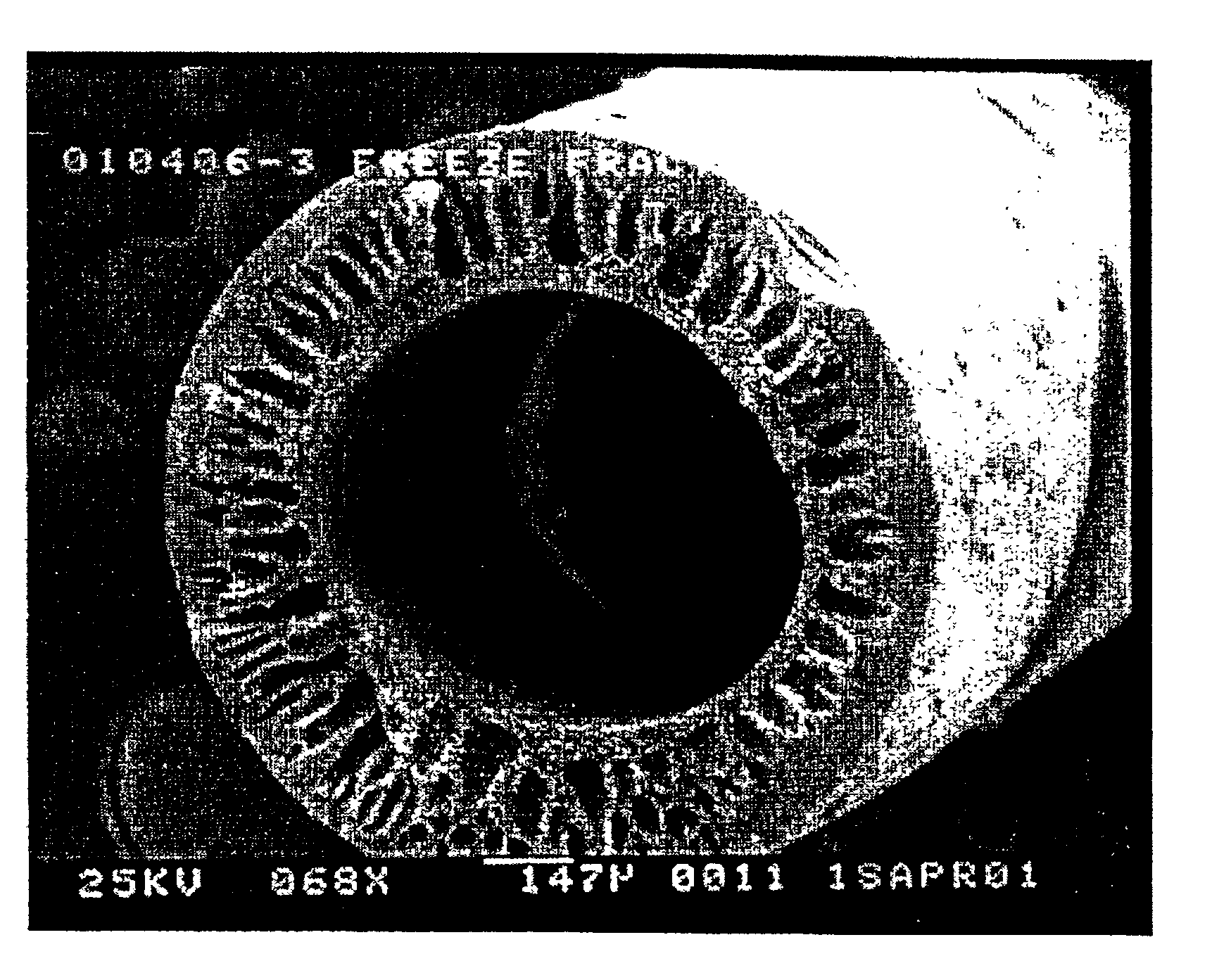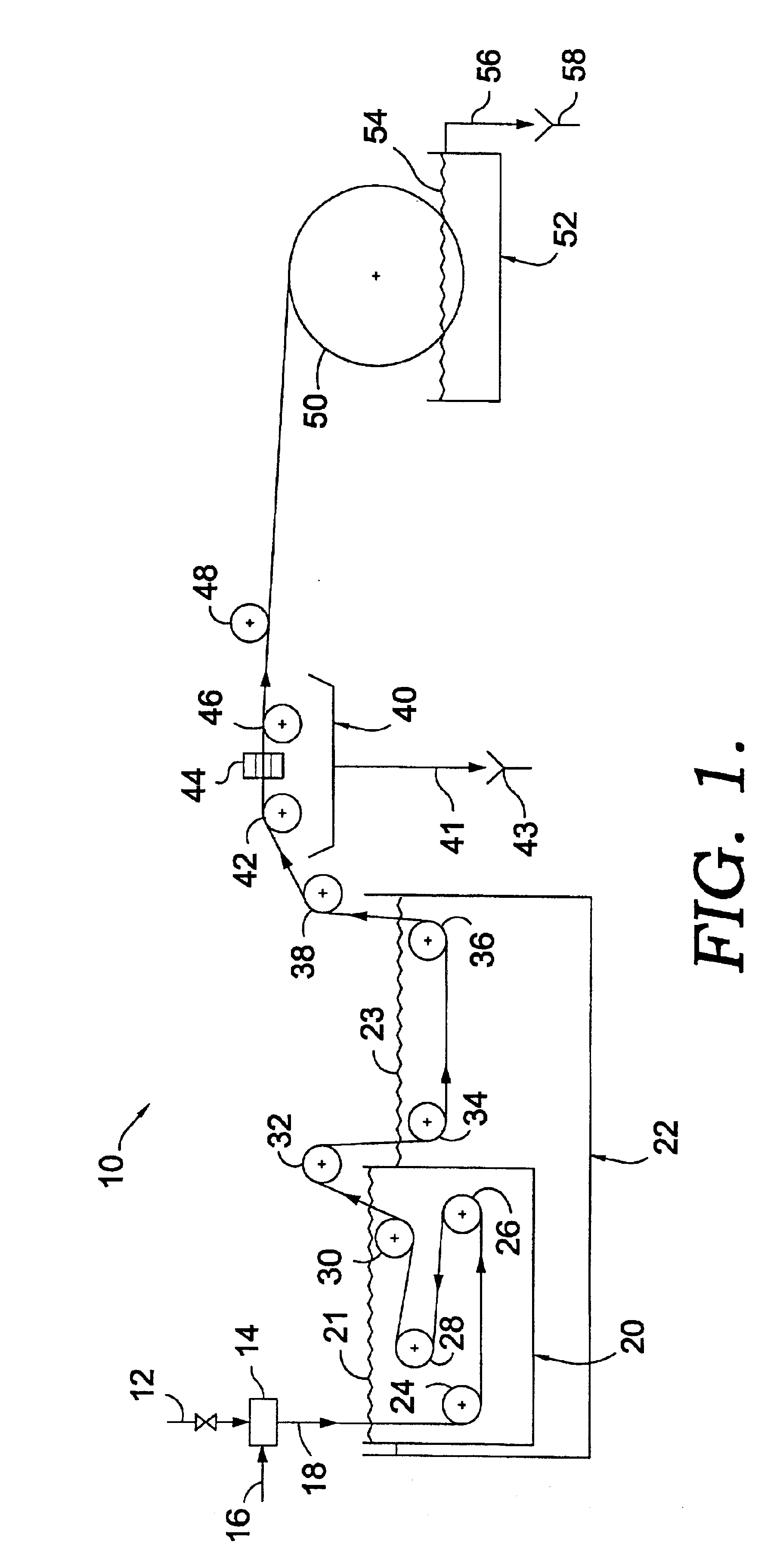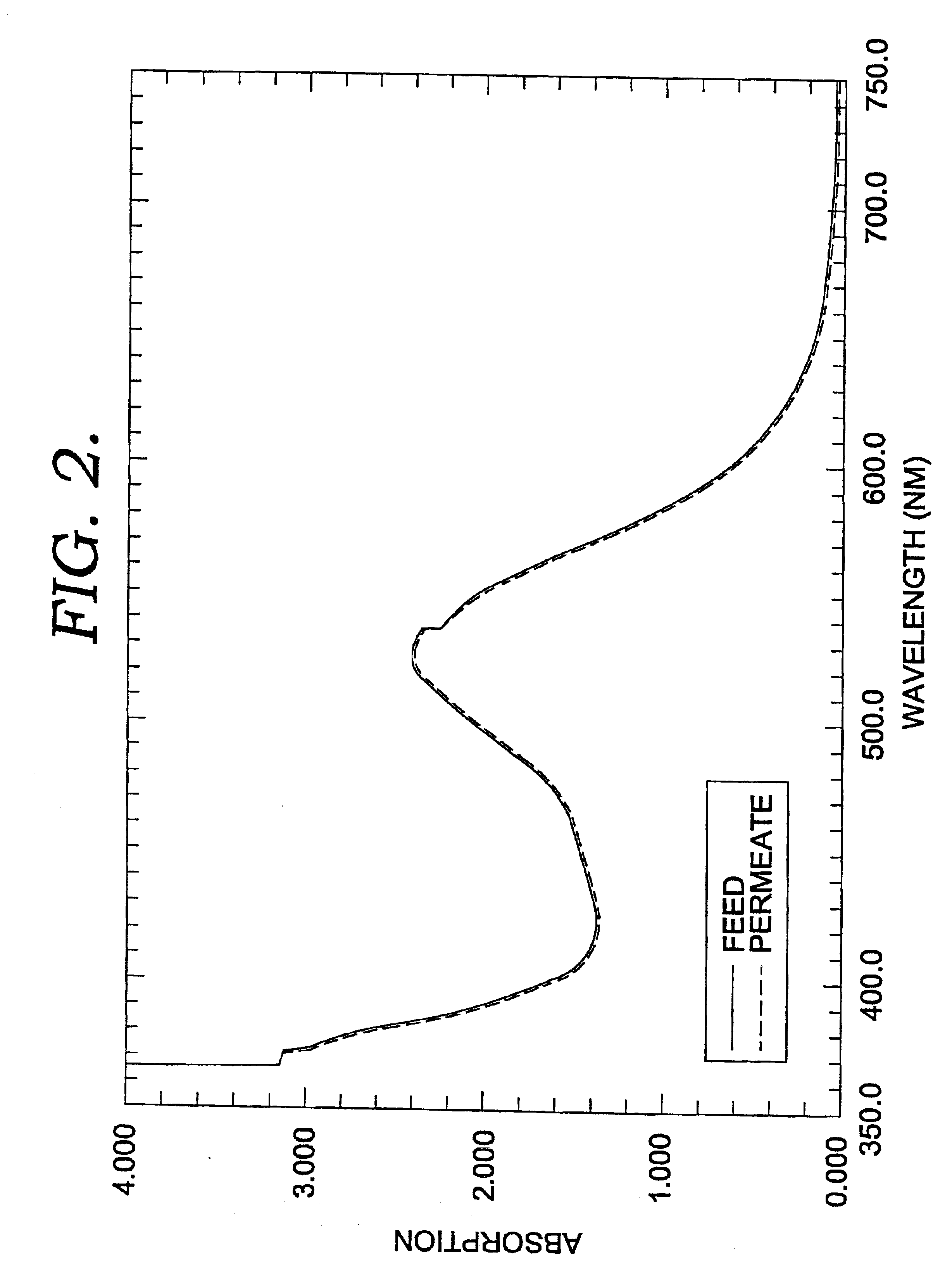Hollow fiber microfiltration membranes and a method of making these membranes
a technology of microfiltration membrane and hollow fiber, which is applied in the field of hollow fiber membrane, can solve the problems of difficult to make a hollow fiber microfiltration membrane, requiring more volumetric space, and the formulation and casting conditions used to obtain a flat sheet microfiltration membrane are normally not applicable for forming a hollow fiber membran
- Summary
- Abstract
- Description
- Claims
- Application Information
AI Technical Summary
Benefits of technology
Problems solved by technology
Method used
Image
Examples
example 1
[0069]In a 2 gallon mixer, 3250 grams of N-methyl-pyrrolidone (NMP) were added to 750 grams of polysulfone (PS) (degree of polymerization was about 1700) and 250 grams of polyvinylpyrrolidone (PVP) while stirring. The mixture was stirred at 60° C. at 1000 rpm until it formed a homogeneous mixture. The mixture was cooled to ambient temperature of about 22° C. Then, 750 grams of maleic anhydride (MA) were added to the mixture. This mixture was stirred at ambient temperature. It formed a homogeneous viscous solution, then it was degassed under a vacuum to give a viscous dope. The dope was transferred to a 5 gallon storage tank and was allowed stand still at ambient temperature for at least 24 hours before use.
[0070]The dope prepared above was extruded into a hollow fiber using equipment shown in FIG. 1. The fiber spinning conditions used and characteristics of the hollow fiber obtained are shown in Table 1. The dope described above was pressurized into a gear pump and was in turn extru...
example 2
[0076]The same extrusion and spinning conditions as in Example 1 were used to prepare another hollow fiber. The composition of the casting solution was changed, as shown in Table 2. The PVP concentration was increased from 5% by weight to 10% by weight, and the N-methyl-pyrrolidone concentration was lowered by 5% compared with the previous case in Example 1. A solvent mixture, instead of water, was used as a coagulation medium. The water in the coagulation bath was replaced with a solution containing 21.9% by volume N-methyl-pyrrolidone, 21.9% by volume polyethylene glycol, 21.9% by volume isopropylnol and 34.2% by volume water. The fiber spinning conditions used are given in Table 2.
[0077]
TABLE 2Composition of Casting solutionPS1700 15%NMP 60%PVP 10%MA 15%Bore Fluid CompositionNMP33.3%PEG40033.3%IPA33.3%Fiber spinning conditionsDope extrusion rate (ml / min)10Flow rate of bore fluid (water) (ml / min)0.79Fiber spinning speed (ft / min)50Gelation bath temperature (° C.)40Water leachin...
example 3
[0080]The same dope formulation and conditions as in Example 2 were used to prepare a hollow fiber. The total amount of dope mixed was scaled up from 5 kg to 54.48 kg., and a 20 gallon mixer was used to mix the dope. The fiber was spun at 30 ft / min using the equipment shown in FIG. 1. The bore fluid used was the same as in the previous case. An effort was made to eliminate isopropylnol from the coagulation medium because it is flammable and poses a potential danger for a large scale production. The coagulation mixture used was 34% water and 66% N-methyl-pyrrolidone. The fiber spinning conditions used are given in Table 3.
[0081]
TABLE 3Composition of Casting solutionPS1700 15%NMP 60%PVP 10%MA 15%Bore Fluid CompositionNMP33.3%PEG40033.3%IPA33.3%Fiber spinning conditionsDope extrusion rate (ml / min)10Flow rate of bore fluid (water) (ml / min)0.79Fiber spinning speed (ft / min)30Gelation bath temperature (° C.)50Water leaching bath (1) temperature (° C.)50Water leaching bath (2) temperatu...
PUM
| Property | Measurement | Unit |
|---|---|---|
| Temperature | aaaaa | aaaaa |
| Length | aaaaa | aaaaa |
| Length | aaaaa | aaaaa |
Abstract
Description
Claims
Application Information
 Login to View More
Login to View More - R&D
- Intellectual Property
- Life Sciences
- Materials
- Tech Scout
- Unparalleled Data Quality
- Higher Quality Content
- 60% Fewer Hallucinations
Browse by: Latest US Patents, China's latest patents, Technical Efficacy Thesaurus, Application Domain, Technology Topic, Popular Technical Reports.
© 2025 PatSnap. All rights reserved.Legal|Privacy policy|Modern Slavery Act Transparency Statement|Sitemap|About US| Contact US: help@patsnap.com



